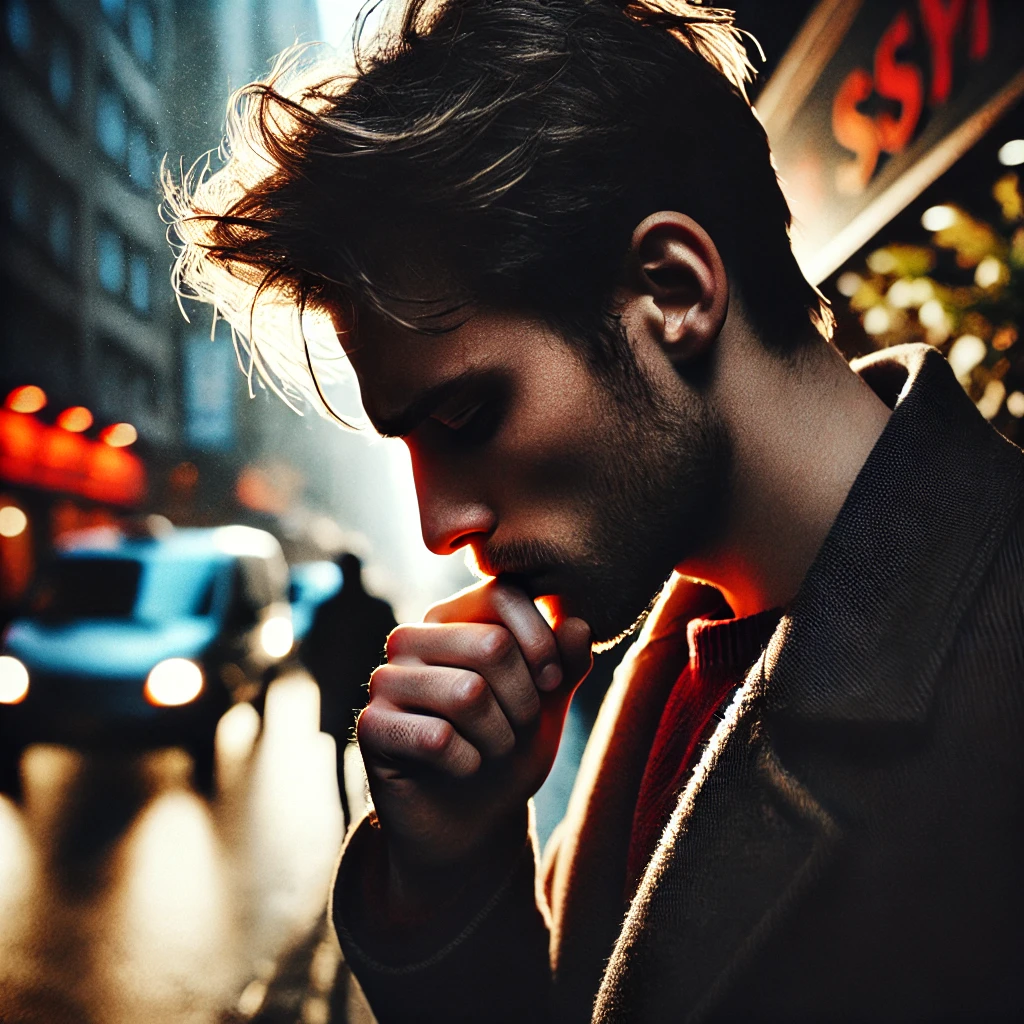Street photography is all about capturing genuine moments, unfiltered expressions, and human emotions that tell compelling stories. A powerful street photograph evokes a response from the viewer, allowing them to feel the emotions present in the frame. Whether it’s joy, sorrow, surprise, or contemplation, mastering the art to capture raw emotions can elevate your street photography to a new level.
Why Capturing Raw Emotions Matters in Street Photography
1. Creating a Connection
Photographs that convey emotions forge a connection between the subject and the viewer, making the image more impactful.
2. Storytelling Through Imagery
Emotions add depth to street photography, transforming a simple scene into a captivating story.
3. Authenticity and Relatability
Candid emotions resonate more with people because they depict raw, unfiltered moments that reflect real-life experiences.
Essential Techniques to Capture Raw Emotions
1. Observing and Anticipating Moments
- Take time to observe the environment and people’s behavior.
- Anticipate reactions to unfolding events to capture emotions at their peak.
2. Mastering Composition for Emotional Impact
- Use the rule of thirds to position subjects in a balanced frame.
- Incorporate leading lines and framing to draw focus to expressions.
- Pay attention to body language, not just facial expressions, to add context.
3. Leveraging Natural Light and Shadows
- Soft morning and golden hour light create dramatic, emotional tones.
- Shadows can enhance mystery, depth, and mood in your images.
- Experiment with high-contrast lighting for more intense expressions.
4. Choosing the Right Camera Settings
- Use a fast shutter speed to freeze fleeting emotions.
- A wide aperture (low f-number) isolates the subject and intensifies the emotional focus.
- Adjust ISO settings based on lighting conditions to maintain image clarity.
5. Capturing Unposed, Candid Expressions
- Avoid drawing attention to yourself to keep interactions natural.
- Blend into the surroundings and use a silent shutter mode if possible.
- Be patient and let moments unfold naturally.
Best Locations for Capturing Raw Emotions
1. Busy Markets and Bazaars
- Vendors negotiating, customers interacting, and daily hustle create a variety of emotions.
- Focus on hand gestures, facial expressions, and animated conversations.
2. Public Transport and Stations
- Train stations, bus stops, and metro platforms are rich with emotions—farewells, anticipation, exhaustion, and excitement.
- Capture moments of solitude, shared laughter, and intense reflections.
3. Cultural and Religious Gatherings
- Festivals, parades, and religious ceremonies evoke deep emotions.
- Be respectful while capturing emotions in sensitive situations.
4. Parks and Public Spaces
- Look for families, couples, and individuals lost in thought.
- Children playing and elderly people reminiscing offer powerful emotional shots.
5. Streets During Unexpected Events
- Protests, celebrations, and street performances create strong emotional moments.
- Pay attention to crowd reactions and spontaneous expressions.
Storytelling in Emotional Street Photography
1. Capturing Sequences and Series
- Tell a story by capturing multiple frames leading up to and after the emotional moment.
- A sequence of images adds depth and continuity to the narrative.
2. Incorporating Environmental Context
- Include background elements that enhance the subject’s emotion.
- Juxtaposition can add contrast and highlight emotional depth (e.g., a laughing child next to a grieving person).
3. Experimenting with Different Perspectives
- Shooting from various angles can change the emotional impact.
- A low-angle shot may emphasize power, while an overhead angle may depict vulnerability.
Ethical Considerations in Emotional Street Photography
1. Respecting Privacy and Consent
- Be mindful when photographing vulnerable individuals.
- If necessary, seek permission before sharing or publishing emotional images.
2. Avoiding Exploitation
- Ensure that your photography respects the dignity of your subjects.
- Do not exploit distressing moments purely for artistic gain.
3. Using Emotional Photography for Awareness
- Document real stories that raise awareness about social issues.
- Ensure the narrative is authentic and not manipulated.
Post-Processing for Emotional Impact
1. Enhancing Colors and Contrast
- Use color grading to emphasize mood—warm tones for happiness, cool tones for melancholy.
- Adjust contrast and sharpness to enhance facial expressions.
2. Cropping for Focus and Composition
- Remove distractions that take attention away from the main emotion.
- Tight framing can intensify the impact of the subject’s expression.
3. Black-and-White Photography for Emotion
- Monochrome removes distractions, highlighting pure emotions.
- Works well for high-contrast, dramatic shots.
Building Confidence as a Street Photographer
1. Practicing with Small Assignments
- Start with capturing emotions in familiar places.
- Focus on a single emotion in different scenarios.
2. Engaging with Your Subjects
- A smile or nod can build trust with the people you photograph.
- Show your work if asked, reinforcing positive connections.
3. Overcoming Fear of Street Photography
- Begin with less intimidating environments, such as tourist spots.
- Use a small, discreet camera to feel less intrusive.
Conclusion
Capture raw emotions in street photography requires patience, observation, and a deep understanding of human expressions. By combining technical expertise with a keen sense of storytelling, photographers can create powerful images that resonate with viewers. Whether you’re capturing joy, sorrow, or contemplation, the key is to remain authentic and respectful, ensuring that every image tells a meaningful story.

Sony Alpha a7 IV: The Ultimate Camera for Photography

Nikon Z5 Review: Is It Worth It?
-

Nikon Z9 : Game-Changer for Photography
-

Top Features of Nikon D850 That Make It Ideal for Portfolio Shoots
Sony Alpha a7 IV: The Ultimate Camera for Photography
Explore the Sony Alpha a7 IV in this complete 2025 review. Learn how its pro-level features, real-world performance, and hybrid flexibility make it the ultimate camera for photography across genres like portraits, weddings, travel, and commercial work. Table of Contents Section 1: Introduction – Why the Sony Alpha a7 IV Stands Out The Sony Alpha…
Nikon Z5 Review: Is It Worth It?
In 2025, photographers—whether hobbyists, content creators, or professionals—seek equipment that blends value, performance, and future-readiness. Enter the Nikon Z5, a full-frame mirrorless camera marketed as a gateway to high-end imaging without a flagship price tag. But how well does it hold up under real-world demands like studio shoots, weddings, landscape adventures, and lifestyle photography? In…
Nikon Z9 : Game-Changer for Photography
Discover why the Nikon Z9 is considered a true game-changer for photography. This in-depth Nikon Z9 review explores key features, real-world performance, and how it excels in professional photo shoots in 2025. Table of Contents 1. Introduction The photography world witnessed a significant shift with the launch of the Nikon Z9, a flagship mirrorless camera…
Top Features of Nikon D850 That Make It Ideal for Portfolio Shoots
Discover why the Nikon D850 is the ultimate DSLR for portfolio shoots. Explore its top features—from resolution and dynamic range to autofocus precision and workflow speed—that help photographers create stunning, high-impact images for professional portfolios. Whether you’re a portrait artist, fashion photographer, or visual storyteller, a portfolio shoot demands technical excellence, creative flexibility, and uncompromised…
Candid Moments with Canon EOS R10: Lightweight & Reliable
In the evolving world of mirrorless photography, the Canon EOS R10 stands out as a lightweight yet powerful camera tailored for real-life storytelling. Whether you’re photographing street scenes, family gatherings, weddings, or spontaneous portraits, capturing genuine emotion requires a responsive and discreet tool. This article dives deep into how the Canon EOS R10 excels in…
Bold Portraits with Canon EOS R5: Is It the Best for Work?
Studio photography has always demanded precision, artistry, and impeccable gear. As the expectations for commercial portraits, fashion campaigns, and editorial work continue to rise, the tools we use must evolve. Enter the Canon EOS R5, a camera that has stirred the professional waters with its impressive technical specs and forward-thinking design. In this comprehensive Canon…


